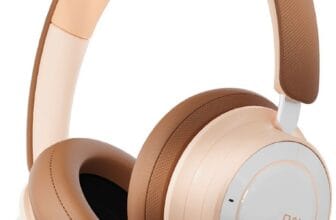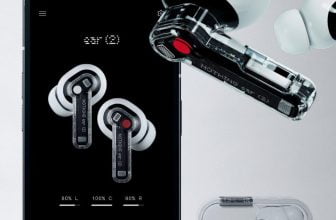Meze Audio Liric
This production line. There are no corners cut here; they are carefully machined, planished to a fine degree, anodized to sub-micron levels and rejected if there is even the implication of a corner. I know that one of the reasons models like the Elite are so ‘spendy’ is that for each part that makes the grade, Meze rejects many others with a Rolls-Royce thoroughness. Same here!
by Alan Sircom
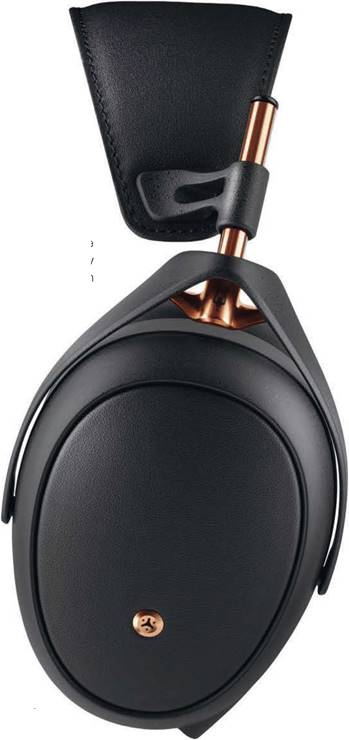
Meze Audio is on the swiftest of trajectories, moving from a company that made just the one set of headphones to an entire headphone audio range in a matter of just a few years. The Liric is the latest from the brand; a high- performance combination of hybrid planar magnetic drive units and closed back design that makes it a strong contender for the best in class in that most personal of personal audio; quality audio without local noise pollution.
Liric faces some stiff opposition, but makes a strong case for itself by virtue of its design and use of high-grade materials, coupled with some extremely good drive units from Rinaro Isodynamics. Meze’s success comes in part from a clever blending of design concepts, with each division knowing when not to tread on the toes of the other. Put simply, Antonio Meze of Meze does the industrial design, Pavlo Shymanovych of Rinaro does the drive unit design, they both work around one another’s design criteria (with some meeting of minds, of course), and the result is the opposite of either the ‘designer’s folly’ almost vanity product, or the ‘designed by committee’ product that aims to do all things for all people and winds up doing precisely nothing good.
Liric sits third in line in Meze’s currently five-strong range of headphones, both in price and performance terms. In a way, this gives the Liric a slight design advantage over the Empyrean and Elite that sit above it, as it means the need to make the headphone appear as expensive as its performance suggests is lessened. Those who like a bit of minimalism and restraint in their ‘cans’ will find much to like in the Liric’s elegant design. But, before you start to dismiss this as a ‘cheapening’ of the top models, take a chance to actually try a pair in the flesh; they are exceptionally well made. Antonio Meze is clearly a perfectionist and hires obsessive-compulsives on
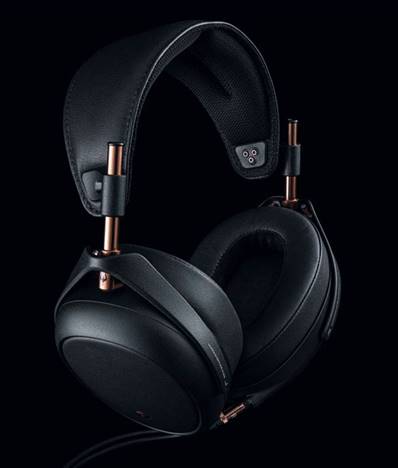
The Liric uses a magnesium earcup, with a headband of steel and aluminium. This is wrapped in a hand-stitched soft leather headband pad, which does away with Meze’s metal external band and headband strap system it has used since the original 99 Classics. It still works well, scores high on the comfy rating and even higher on the ‘breathability’ scale, and looks good too. The bare metal parts of the headphone are given a lovely process that puts them somewhere close to an antique and richer ‘rose gold’, with a just satin enough look to make them a feature without shouting. What people think is a logo set into the lower front of each ear cup is a small vent. This is more for comfort than acting as a port – think of it as an escape valve, like in a Moka pot, but without the scalding water. ‘Liric’ in an Art Nouveau font is embossed on the headband.
“The real star of the show, however, is the Rinaro MZ4 hybrid array driver.”
The Liric and its two headphone cable options comes supplied in an equally elegant travel/presentation case. Its two cables both terminate in a 3.5mm mini jack (there’s an adaptor for a 6.3mm jack and the two-jack airline socket provided), meaning you have a 1.5m cable for travel and a 3m cable for home use. Meze also provides upgrade options for balanced operation.
The real star of the show, however, is the Rinaro MZ4 hybrid array driver. This 92x63mm oval isodynamic/planar magnetic driver is effectively a two-way unit in the same enclosure, with a ‘switchback’ coil (which looks like the toughest race track known to man with five hairpin bends and two 90° turns going into and out of the straight) for bass frequencies and a lower-mounted spiral coil for mids and highs. There’s also a patent pending ‘Phase-X’ design used specifically for the closed-back Liric, which is said to improve ambience and imaging in order to bring the headphone in line with open-back designs.
But let’s hark back to that case for a second, and not only because it’s so beautifully finished with the elegant inset and gentle curves. Why focus on this? It’s a travel case, and echoes the notion that the Liric is touted to be a travel headphone system. It’s certainly efficient enough to be driven by anything with a 3.5mm mini jack (it was absolutely fine when I used it with an old iPod and the output from my MacBook Pro) and at 391g it’s not a weighty headphone system, but ‘portable’ in this case is limited by the physical size of headphones and box. This isn’t the ‘sling in your messenger bag and ride the metro’ portable; it’s ‘hotel lobby’, or ‘club-class long-haul seat-back movie’ portable. In fact, I did sling them in my messenger bag (in the case, of course) and use them… but I used them at the destination rather than on the journey.
The big thing is just how good they sound. This manages to acheive that combination of the impressive clarity and ‘thereness’ you get from planar magnetic drive units, with the added bonus of more texture and slam to the bass, and the isolating effects of closed-back headphones. That’s close to a Holy Grail of listening for many; those who want the detail and expansiveness of a planar magnetic design, but with some of the bass power of dynamic drivers and the ability not to have the world bleed into your listening time.
“Music is presented close to you, yes, but not so close that it seems as if musicians are using your head as a studio.”
Let’s not understate or dilute that impressive combination of ‘positives’. The sheer precision of that sound is beguiling. When you get a fine singer like Joyce DiDonato [Stella Di Napoli, Erato], her voice comes to life in front of you; you hear the clarity and power of that voice, coupled with the way her diaphragm moves as she sings. Were it not that I come from the ‘I can carry a tune in a bucket’ school of singing, it would be a masterclass in how to sing to that degree. As it is, it is at once a musical performance of rare passion and energy and a fascinating exercise in biodynamics in action.
Normally, you are constrained either by environmental noise (either to your ears, or from your ears to those in the same room) or by the ‘soundstage slugging’ impact of closed-back designs, but the Liric does effectively bring the best of both worlds to the game.
As you move through the repertoire of your musical collection, the same points emerge time and again; the level of detail is exceptional, and extends up and down the frequency range. Sounds are clear, precise, detailed and sit in their own physical 3D ‘space’, with a bare minimum of in-head lateralisation. Music is presented close to you, yes, but not so close that it seems as if the musicians are using your head as a studio.
It’s also a headphone system that doesn’t have a volume ‘sweet spot’. It holds together well at low levels and high ones. The headphones are claimed to ‘top out’ at 130dB, but I’d exercise caution in using them as headbanger headphones; not only does that way lie hearing damage, but they are best pulled back from the brink. Using the Lirics without the attendant headphone amplifiers we are used to using at this level also increases the potential for nasty amplifier distortion at high volumes. Lirics are sturdy beasts and can take the punishment far more than your ears can. However, where I liked them most was for low-level late night listening. Sure you can still play loud if only you are listening, but those reflective quiet moments rely on equally reflective, quiet music, and ‘Shhh/Peaceful’ from Miles Davis In A Silent Way [Columbia] demands to be played that way and the way the Lirics hang together is hard for even conventional cone-and-dome speakers to replicate.
Moving across to my rock album of the moment, Lady In Gold by Blues Pills [Nuclear Blast Records] does highlight one of the rare trade-offs in the Liric sound; it’s powerful and dynamic, but more dynamic headphones exist. Granted almost all of those headphones do themselves trade dynamic punch for less air and detail, but this is not a subtle recording… it’s consciously setting the clock back to the late 1960s/early 1970s hard rock. The Liric still makes a good sound here, but where it brings out the detail of the bass and drum kit, you also want it to bring out the gutsy sound too. and while the Liric achieves ‘gutsy’ there are others born to the task.
However, I think this is a trade-off I’d be happy to make for the most part. There are few tracks that fail to benefit from the Liric’s ability to communicate, er,
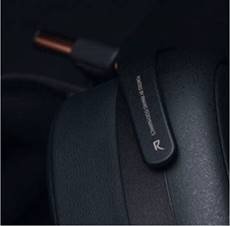
lyrically, with their extremely good detail and vocal articulation, that outstanding coherence across the board and fine soundstaging. I remain a little unconvinced by the Liric’s ‘portable’ nature (it’s more ‘transportable’ than designed for commuter use, especially as that market is now fully committed to Bluetooth and noise cancellation) but I am in no doubt about the Liric’s sound. Once again, Meze makes a masterpiece.
TECHNICAL SPECIFICATIONS
Driver Type: Rinaro Isodynamic Hybrid
Array® MZ4
Operating Principle: Closed
Ear Coupling: Circumaural
Frequency Response: 4-92,000 Hz
Impedance: 30 ohm
Nominal SPL: 100 dB (1 mW/1 kHz)
Maximum SPL: >130 dB
Total Harmonic Distortion (THD): <0.15%
Weight: 391g
Manufacturer: Meze Audio
URL: mezeaudio.com
UK Distributor: SCV Distribution
URL: scvdistribution.co.uk
Tel: +44(0)3301 222 500




